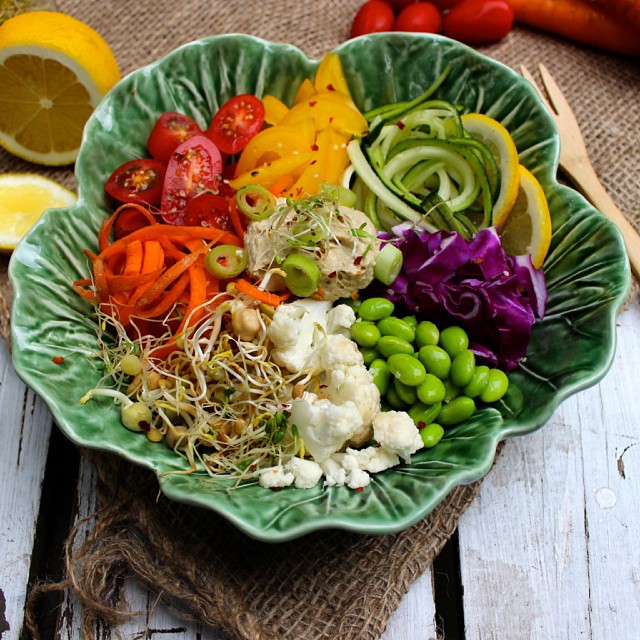 Not all salads are created equal.
Not all salads are created equal.
Build a truly super salad by following these 5 steps
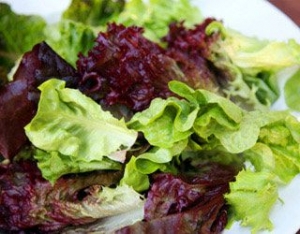 Start with a strong foundation.
Start with a strong foundation.
First things first: Start by upping the nutritional ante by choosing a base for your salad that provides important nutrients like folic acid and lutein. Give up the iceberg for mesclun greens, baby spinach, or a spring mix that includes a variety of dark green lettuces. For less than 20 calories per two cups you can have a tasty, nutrient-rich base.
Leafy greens are full of vitamins, minerals, and disease-fighting phytochemicals. They are rich in fiber, an important nutrient for weight loss and maintenance because it keeps you feeling full and helps control your hunger. Fiber can also lower cholesterol and blood pressure, and help to temper blood-sugar swings by slowing the absorption of carbohydrates into your bloodstream after meals. This lowers your risk of cardiovascular disease and type 2 diabetes. Leafy greens also contain a lot of water, which helps keep you hydrated and contributes to beautiful skin and hair.
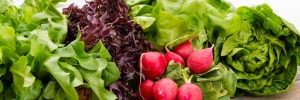 Leafy Green Vegetables:
Leafy Green Vegetables:
Arugula
Arugula (also known as rucola and rocket) is a cruciferous and leafy green vegetable with a peppery taste and is often used in salads.
Endive
Endive is a bitter leafy vegetable that is often used in salads or eaten as a side dish. There are multiple varieties of endive, including Belgian endive, escarole, and curly endive (frisée). Like other greens, endive is very low in calories, which makes it a great addition to any weight-loss plan.
Escarole
Escarole is a leafy green vegetable that can be used in salads or eaten as a side dish.
Lettuce
There are various types of lettuce, but all of them are leafy green vegetables and are low in calories, such as romaine, green leaf, red leaf, bibb, and butterhead.
Radicchio
Radicchio is a leafy vegetable with a bitter taste. It is often added to salads or braised like cabbage for a side dish.
Spinach
Spinach is a dark leafy green vegetable and one of the most nutrient-dense foods on the planet! Because it’s high in fiber and very low in calories, spinach can help you manage type 2 diabetes and is a terrific addition to any weight loss plan. It’s also packed with nutrients — it’s a good source of antioxidants
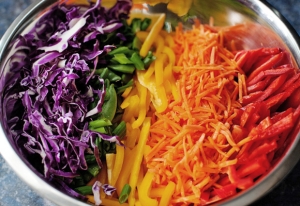 Add a Rainbow of Colorful Veggies
Add a Rainbow of Colorful Veggies
Take advantage of fresh vegetables and load them on top of your greens — at 25 calories or less per 1/2-cup serving you can’t go wrong. Choose a variety of colors to get the most health benefits — red bell peppers, broccoli, carrots, sugar snap peas, cucumbers, and red onions are all great choices. Be sure to stick with raw or lightly steamed vegetables and steer clear of ones that are fried or swimming in oily marinades.
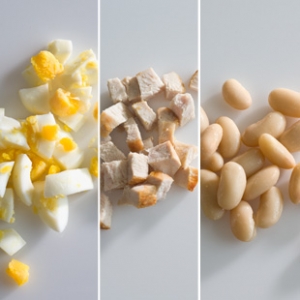 Don’t forget the protein.
Don’t forget the protein.
Your salad becomes a meal when you add the protein! If you’re opting for animal protein, select one lean source (or two if you’re extra-hungry), such as four egg whites or three ounces of skinless chicken or turkey breast, water-packed chunk light tuna, wild salmon, or lean sirloin steak. If you’re vegetarian or just want to mix it up, choose half a cup of cubed tofu or three-quarters of a cup of chickpeas, kidney beans, pinto beans, or other legumes. Stay away from caloric or processed meats like bacon and salami, and definitely skip anything fried or drenched in heavy sauce.
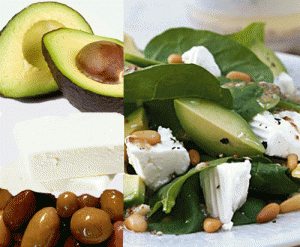 Choose (Only) one extra.
Choose (Only) one extra.
Extras are those items that typically add another dimension and flavor to your combo of greens, vegetables, and lean protein. While some of these extras are packed with nutrients, they’re also packed with calories, so they should be added sparingly. These are usually the items that can turn your healthy salad into a calorie nightmare. Sure these are all “healthy” items but add too much and you miss the mark. Luckily, a little of these goodies goes a long way, so you won’t need more than one of the following (each of which is between 40 and 70 calories): 2 tablespoons cheddar, Parmesan, goat, Swiss, or feta cheese; 1 tablespoon chopped walnuts, pecans or sliced almonds; 1 tablespoon sunflower or pumpkin seeds; 1 ounce avocado; 10 small olives (canned/jarred in water); 1/4 cup croutons; 2 tablespoons dried cranberries or raisins.
 Dress it up lightly.
Dress it up lightly.
Some people eat salad only if it’s doused with dressing. Unfortunately, dressing can take a salad from fresh and nutritious to downright unhealthy. One tablespoon of your average vinaigrette is about 80 calories and one tablespoon of creamy ranch is almost 100 calories. Ask for the dressing on the side when ordering, and if the restaurant only offers regular (full-fat) varieties, limit your usage to one and a half tablespoons for an entrée salad and one tablespoon for a side salad. Whenever possible, choose light, low-calorie, or low-fat options. You can also make your own light vinaigrette using one part oil and three parts vinegar with some mustard, lemon, 100 percent fruit jam, or spices for added flavor.
Looking for some tasty salad dressings that won’t break the calorie bank? Try this Light Balsamic Vinaigrette or Light Buttermilk Ranch.

